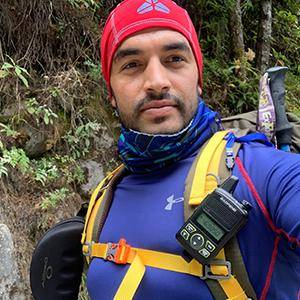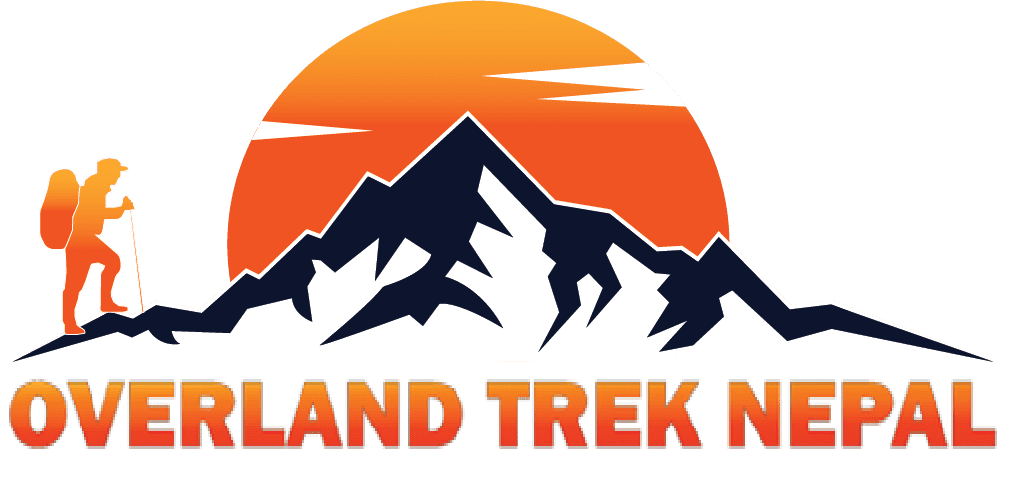The payment is encrypted and
No Booking Fee
No Cancellation Fee

Do not hesitate to give us a call, WhatsApp or email us. We are always there to help you to make your tour safe and entertaining.
Pisang Peak sits on an elevation of 6,091 meters and is also known as Jong Ri, located on the northeastern side of Annapurna Sanctuary. The Annapurna Conservation area is home to rich flora and fauna and towering Himalayan giants, discovering various indigenous settlements through the trail, this trail brings a combination of nature and culture at its finest.
Pisang Peak Climbing is a 14-day trek and climbs to the peak that sits above the solitary Pisang settlement, with close-up views of the neighboring mountains of Annapurna Massif, Chulu Range, Damodar, Manaslu, Glacier Dome, and Tilicho Top seen from the peak summit. The German Expedition team was the first to successfully scale Pisang Peak in 1955. Pisang Peak is a ‘trekker’s peak,’ with a moderate landscape providing one of the easiest and shortest climbing experiences, even though this is one of the simpler climbs in the Himalayan area, it is suggested that you have a reasonable degree of physical fitness and health.
The journey begins from Kathmandu with a drive to Chamje, followed by a trek to Upper Pisang Village, and from Base Camp to High Camp, to the Pisang Peak Summit. A drive from Chame to Kathmandu follows the same path as the ascent.
The flight into Kathmandu is breathtaking with a panoramic view of the valley and Himalayan ranges towering. Once you land and check out from the Tribhuvan International Airport our agent will greet and welcome you, and drive you to your hotel, later in the evening you’ll be assisted with all of your travel requirements for the trek by your guide.
Maximum Altitude: 1400m
Meals: Welcome Dinner
Accommodation: Alpine hotel and apartment or as per your requirement.
When you wake up you will have your breakfast and then will move out for a city tour. The valley of Kathmandu has much to offer, you can take a walk around the city or hire a guide, and later in the afternoon you’ll have a brief orientation by your guide regarding the trip and a final check of all the equipment which is needed then will move to have Nepali typical thali set, it will be a different test and experiences for you. Then back to the hotel and spend your night at the hotel.
Maximum Altitude: 1400
Meals: Breakfast, Lunch, Dinner
Accommodation: Hotel
After breakfast, head to Chamje down the Prithvi Highway beside the Trishuli River, the path might be difficult and winding at times, passing through hills and scattered communities along the way to the Marsyangdi River up to Chamje. Chamje is a little settlement in the Marsyangdi Valley and the starting point of your trekking. Once you reach here relax for the night.
Maximum Altitude: 1410m
Duration: 8-9 hours drive
Meals: Breakfast, Lunch, Dinner
Accommodation: Teahouse
After breakfast head towards Dharapani, the trail passes under several suspension bridges from here, pass past through fields of maize, barley, and rhododendron and bamboo-covered woodland, till you reach the rocky paths which lead to Tal and subsequently Karte. Arrive in Dharapani after passing through grassy pathways among the narrow bamboo vegetation.
When you reach Dharapani you will explore the local village and about people and culture then spend your night there.
Maximum Altitude: 1860m
Duration: 5-6 hours trek
Meals: Breakfast, Lunch, Dinner
Accommodation: Teahouse
Get up early morning have your breakfast then be ready to move out trek. Today begin your journey early in the morning, you’ll cross a bridge to Bagarchhap, pass through a lush forest with vistas of snow-capped mountains, approach Koto hiking beside the Marshyangdi river banks, and from here head towards Chame. Chame is a small community in the secluded Nar Phu Valley and is Manage District’s administrative headquarters. Once you reach here explore around the settlement.
Maximum Altitude: 2650m
Duration: 5-6 hours trek
Meals: Breakfast, Lunch, Dinner
Accommodation: Teahouse
Will wake up early have your breakfast then start your trek to Upper Pisang. Today you’ll hike to Upper Pisang, which is located further within the Marsyangdi Valley. Start your trek to Bharathang village which is around 2 hours from Chame the settlement is known for its delicious apples, from here head towards Dhukur Pokhari passing along Swarga Dwari, translated to ‘Gates to Heaven,’ a massive natural carved steep slope, follow the zig-zag trail to Dhukur Pokhari. From there, climb to Upper Pisang. Upper Pisang, is an old town on the banks of the Marsyangdi River. Once you reach here explore around the settlement.
Maximum Altitude: 3300m
Duration: 5-6 hours trek
Meals: Breakfast, Lunch, Dinner
Accommodation: Teahouse
Today is your day for acclimatization, as increases altitude, your body will need to acclimate to the thin oxygen. Upper Pisang has various vantage points for acclimatization excursions after breakfast then go on for a hike around the village, explore schools of the region, or visit a monastery with views of Mt. Gangapurna and Mt. Annapurna on its backdrop later explore the village and chat with the locals.
Maximum Altitude: 3300m
Meals: Breakfast, Lunch, Dinner
Accommodation: Teahouse
Early in the morning, after breakfast, you’ll head towards the Pisang Peak Base Camp, passing dense woodlands till you reach Kharka a large grassland for grazing their livestock which sits near a ridge and offers spectacular mountain views. It’s your first night at a campground.
Maximum Altitude: 4910m
Duration: 3-4 hours
Meals: Breakfast, Lunch, Dinner
Accommodation: Tent
You’ll have pre-climbing training by your climbing guide to prepare you for the next day’s ascent, your guide will show you how to utilize climbing equipment. As part of the training, you will be required to ascend and descend using ropes.
Take a break after the rain as you’ll have to get up early the next day.
Meals: Breakfast, Lunch, and Dinner
Accommodation: Tent
Today you’ll be ascending the peak of Pisang Peak, so wake up early in the morning and start early to escape the unpredictable mountain winds during the day. A hard ascent to a rocky slope begins the trek, there isn’t much technical terrain, however, pay attention to the snowy slopes the climbing guide will fasten the ropes along the path as the summit gets steeper.
As you reach the peak of Pisang Peak you’ll see mountain peaks of the Chulu Range, Annapurna Range, Damodar peaks, Manaslu, Glacier Dome, and Tilicho. After a brief time on the summit, return to the Base Camp.
Maximum Altitude: 6091m
Duration: 8-10 hours
Meals: Breakfast, Lunch, Dinner
Accommodation: Tent
If your summit attempt is canceled due to severe weather or illness, this extra day has been set aside for summiting, this day can also be used in the case of an emergency, such as airline delays or other unanticipated situations that force us to cancel a day of your vacation.
If all goes according to plan, the additional day may be used to take it easy and explore more of the path. Alternatively, you might spend the additional day tour in Kathmandu.
Meals: Breakfast, Lunch, and Dinner
Accommodation: Teahouse
After your breakfast today you’ll retrace your steps back to Chame, passing through the lush sub-tropical forest, and raging rivers. Upon reaching Chame head towards your accommodation and celebrate your last day in the mountains with your staff and team and share your sadness and happiness with them.
Maximum Altitude: 4380m (Pisang Peak Base Camp)
Duration: 7-8 hours trek
Meals: Breakfast, Lunch, Dinner
Accommodation: Teahouse
Drive from Chame to Kathmandu after breakfast, along the Marsyangdi Valley beside the Marsyangdi river passing through various settlements on hilltops. Once you arrive in Kathmandu you’ll be transported to your hotel.
In the evening, a special cultural program and a farewell dinner will be served to commemorate the end of your journey.
Maximum Altitude: 1400m
Duration: 8-9 hours drive
Meals: Breakfast, Dinner
Accommodation: Hotel
Our staff will drop you off at the airport, you’ll bid farewell to your newfound friends as well as Nepal.
NOTE: All of the trekking hours and distances mentioned above are estimates and should only be used as a general guideline.
Spring (March to May) and autumn (mid-September to November) are the best times to trek to Pisang Peak Climbing. In spring, the foothills are ablaze with wildflowers, rhododendron blossoms, and orchids hanging from branches, the weather is dry and clear during this season, making it ideal for trekking and exploring the breathtaking scenery of the mountains. In autumn after the end of the heavy monsoon season, with a clear atmosphere and the days are warm though the evenings are quite chilly trekking to Pisang Peak Climbing is extremely popular.
In popular trekking regions such as Annapurna, Everest, Langtang, and Manaslu, there is a menu system with various ethnic cuisines foods as well as western meals, but some locations provide you with typical Nepali meals which are different from international meals, and these meals are prepared by the local supplement, every tourist lodge and tea house has a well-trained cook who focuses on clean, hygienic, fresh, and delicious foods, and every lodge has safe drinking water or mineral water.
If you buy a water purification tablet in Kathmandu, you can take water tap water and purify it yourself, saving money and reducing plastic pollution.
Travel insurance is required for all clients participating in any activity. We strongly advise you to obtain a complete insurance plan from a reputable insurance company to cover personal injury, death, hospital expenses, repatriation fees, helicopter rescue, and any other disease covered by the insurance plan.
The Nepalese consulate in your country or the immigration office at Tribhuvan International Airport in Kathmandu must issue each client with a valid visa with a six-month validity from the date of return.
The ideal time for Pisang Peak Climbing is during the pre-monsoon (spring) and post-monsoon (autumn) seasons. The months of April to June and September to November offer favorable weather conditions with clear skies, stable temperatures, and less precipitation. These periods provide optimal climbing conditions and panoramic views of the surrounding Himalayan peaks.
Pisang Peak is considered a moderate to challenging climb. While it does not require extensive technical climbing skills, a good level of physical fitness, prior trekking experience, and basic mountaineering skills are essential. The ascent involves steep sections and may require the use of crampons and ice axes. Proper acclimatization and adherence to safety protocols contribute to a safer and more enjoyable climbing experience.
The duration for Pisang Peak Climbing varies, but typically the entire journey, including trekking and climbing, takes around 16 to 18 days. The itinerary usually includes acclimatization days, trekking through the Annapurna Circuit, and reaching the base camp before the ascent. The actual climb to the summit of Pisang Peak usually takes a few days, depending on weather conditions and the group’s pace.
Climbers undertaking Pisang Peak Climbing need specific permits. These include the Annapurna Conservation Area Permit (ACAP), which covers the conservation area the peak is situated in, and a climbing permit issued by the Nepal Mountaineering Association (NMA). Both permits can be obtained in Kathmandu or the respective entry points. It is crucial to ensure all permits are obtained before embarking on the climbing expedition.
